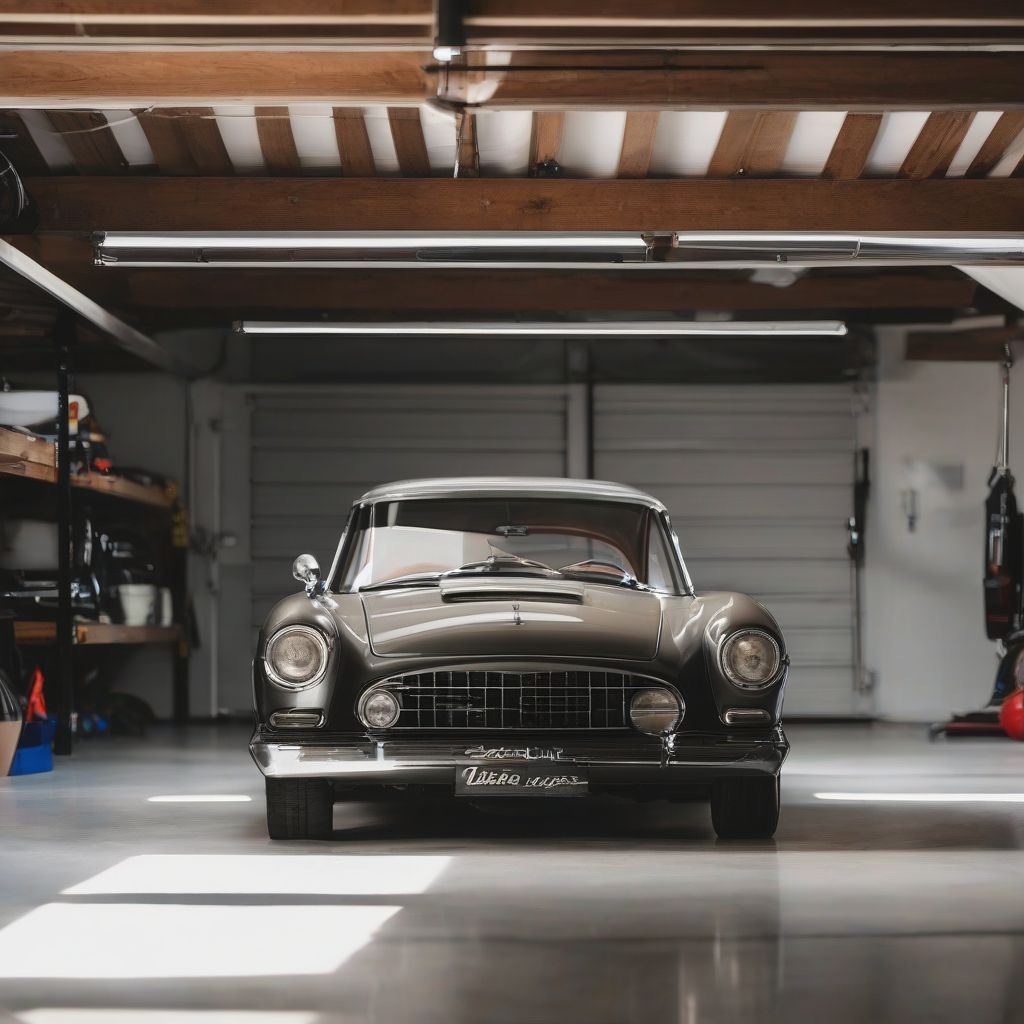There’s a certain magic about cruising down the road in a restored classic car, turning heads and sparking conversations at every stoplight. It’s an investment of time, passion, and yes, a good chunk of money. So, how do you ensure this labor of love remains a prized possession, both mechanically sound and financially rewarding?
The key is diligent maintenance. It’s not just about keeping it shiny; it’s about protecting your investment and preserving automotive history. Let’s dive into the essential tips for maintaining the value of your restored classic car.
Preservation is Key: Beyond the Shine
 Classic Car In Garage
Classic Car In Garage
While a sparkling exterior is undeniably attractive, true classic car maintenance goes beyond a quick wash and wax. It’s about preserving the integrity of original parts, the quality of the restoration, and preventing future damage.
1. Controlled Climate Storage is Non-Negotiable
Think of your car like a fine wine – it needs the right environment to age gracefully. Humidity and temperature fluctuations are the enemies, potentially leading to rust, paint damage, and upholstery deterioration.
- Ideal Storage: A climate-controlled garage is your best bet. Aim for consistent temperatures and moderate humidity levels.
- Protective Covers: Invest in a high-quality, breathable car cover to protect against dust, UV rays, and minor scratches, even when stored inside.
2. Regular Cleaning: More Than Meets the Eye
Routine cleaning is vital for both aesthetics and preservation:
- Washing: Use a gentle car wash soap and avoid harsh chemicals. Dry the car thoroughly to prevent water spots, especially on chrome and polished surfaces.
- Interior Care: Vacuum regularly and use appropriate cleaners for your upholstery type, whether leather, vinyl, or fabric.
- Undercarriage Attention: Don’t neglect the undercarriage. Regular cleaning prevents dirt and grime buildup, which can lead to rust and corrosion.
3. Fluid Checks and Changes: The Lifeblood of Your Classic
Just like any vehicle, regular fluid checks and changes are crucial:
- Oil Changes: Use the recommended oil type for your car’s engine and follow the manufacturer’s suggested intervals.
- Coolant: Check the coolant level regularly and ensure it’s a suitable type for your classic car’s cooling system.
- Brake Fluid: Flush and replace the brake fluid periodically to maintain optimal braking performance and prevent corrosion within the brake lines.
- Transmission Fluid: Consult your car’s manual for the recommended transmission fluid type and change intervals.
4. Battery Maintenance: Avoiding a Dead End
A neglected battery can leave you stranded and potentially damage your electrical system:
- Regular Charging: If your car sits for extended periods, use a trickle charger to maintain the battery’s charge.
- Corrosion Check: Clean any corrosion on the battery terminals and ensure a secure connection.
[amazon bestseller=”car battery trickle charger”]
Driving and Enjoying Your Classic: Finding the Balance
While preservation is crucial, remember that classic cars are meant to be driven!
5. Regular Driving: Keeping Things Moving
Occasional use keeps the engine lubricated, the fluids circulating, and the mechanical components in working order.
- Frequency: Aim for at least a 30-minute drive every couple of weeks. This helps prevent seals from drying out and avoids flat spots on tires.
6. Careful Driving: Respecting the Past
Driving a classic car requires a different mindset:
- Smooth Operation: Avoid rapid acceleration, hard braking, and rough roads to minimize stress on the older components.
- Be Aware: Classic cars often have different handling characteristics than modern vehicles. Be mindful of blind spots and braking distances.
7. Addressing Issues Promptly: Don’t Delay
Ignoring a small issue can lead to significant and costly repairs down the line:
- Stay Alert: Be attentive to any unusual noises, leaks, or performance changes.
- Consult Specialists: If you notice a problem, consult a mechanic specializing in classic cars. They have the expertise and knowledge to address issues correctly.
Documenting Your Classic’s Journey
8. Keeping Detailed Records: A Valuable History
Meticulous record-keeping adds to your car’s provenance and value:
- Service Log: Document every service, repair, and part replacement. Include dates, mileage, and receipts.
- Restoration Details: Compile a comprehensive record of the restoration process, including photos, invoices, and information about the professionals involved.
9. Showcasing Your Classic: Sharing the Passion
Sharing your classic car with the world can be incredibly rewarding:
- Car Shows: Participate in classic car shows and events. It’s a chance to connect with fellow enthusiasts and showcase your pride and joy.
A Legacy on Wheels
Maintaining a restored classic car is an ongoing labor of love, requiring dedication and meticulous attention to detail. By following these tips, you’ll not only preserve your investment but also ensure that your classic car continues to be a source of joy and pride for years to come. After all, you’re not just maintaining a car; you’re preserving a piece of automotive history.
